
Shed Fat and Build Strength: Try These Trainer-Backed Workouts for Maximum Burn!
Achieving fat loss isn’t just about cutting calories; exercise plays an essential role in reaching and maintaining a healthy body weight and composition. Fat-burning workouts, especially those combining high-intensity and full-body movements, significantly boost calorie burn, increase metabolic rate, and strengthen muscles, all of which contribute to lasting results. Whether your goal is weight management, muscle toning, or improved endurance, this guide covers the top workout routines for effective fat-burning. If your fitness goal is to shed fat fast, then you must visit this gym.
High-Intensity Interval Training (HIIT) for Maximum Fat Burn
High-Intensity Interval Training (HIIT) is one of the most effective workout strategies for burning fat. HIIT workouts are designed to alternate between intense bursts of exercise and shorter rest periods, creating a high-calorie burn even after you’ve finished working out—a phenomenon known as excess post-exercise oxygen consumption (EPOC). Studies show that HIIT can help burn up to 30% more calories than other forms of exercise in a shorter time frame.
Sample HIIT Workouts
Beginner HIIT Routine:
- Warm-up: 5 minutes of light jogging or brisk walking
- Exercises (20 seconds work, 10 seconds rest, repeat 3 times):
- Jump squats
- Push-ups
- Mountain climbers
- Bicycle crunches
- Cooldown: 5 minutes of stretching
Advanced HIIT Routine:
- Warm-up: 5 minutes of light cardio
- Exercises (30 seconds work, 10 seconds rest, repeat 4 times):
- Burpees
- High knees
- Russian twists
- Kettlebell swings
- Cooldown: 5-10 minutes of stretching
Strength Training for Sustainable Fat Loss
Strength training is invaluable for fat loss because it builds lean muscle, which in turn increases the body’s resting metabolic rate (RMR). This means your body burns more calories at rest, making it easier to maintain a calorie deficit. Studies indicate that combining strength training with a healthy diet can be more effective for long-term fat loss than cardio alone.
Recommended Full-Body Strength Exercises
- Squats (works quads, glutes, hamstrings)
- Deadlifts (engages lower back, glutes, hamstrings)
- Lunges (targets quads, glutes, and calves)
- Push-ups (strengthens chest, triceps, and shoulders)
Want To Boost Your Stamina? Do This Now
Sample Strength Training Routine
2–3 sets of 8–12 reps of each exercise, rest 60–90 seconds between sets
- Squats
- Deadlifts
- Lunges (each leg)
- Push-ups
- Bent-over rows
Cardio Workouts That Target Fat Loss
Cardio remains a popular choice for fat-burning due to its efficiency in burning calories. While steady-state cardio is beneficial, incorporating interval-based cardio can further boost fat loss and prevent workout plateaus.
Top Cardio Exercises for Fat Burning
- Running: Burns approximately 600–700 calories per hour, depending on speed and intensity
- Cycling: Approximately 400–600 calories per hour, with higher calorie burn during intense uphill cycling
- Rowing: Engages multiple muscle groups, burning around 500–600 calories per hour
Full-Body Circuit Training for Faster Results
Circuit training combines the benefits of strength and cardio, helping you achieve both cardiovascular health and muscle strengthening in a single session. Circuit workouts typically involve moving quickly between exercises, with minimal rest to keep your heart rate up. This combination maximizes calorie burn and builds endurance.
Sample Circuit Routine
- Warm-up: 5 minutes of light cardio
- Circuit (perform each exercise for 1 minute, rest 1 minute between circuits, complete 3 rounds):
- Jumping jacks
- Dumbbell squats
- Plank with shoulder taps
- Jump rope
- Bicycle crunches
Including Active Rest Days to Enhance Recovery and Fat Loss
Active recovery days play an essential role in preventing workout burnout, reducing injury risk, and maintaining motivation. Engaging in low-impact activities, such as walking, yoga, or gentle cycling, promotes blood flow to the muscles without adding stress to your body. Active rest days also allow your body to repair itself, essential for both muscle growth and fat loss.
Tips for Incorporating Active Recovery:
- Yoga or Pilates: Increases flexibility and aids relaxation
- Brisk Walking: Easy on joints and still burns calories
- Swimming or Cycling: Low-impact options to keep your body moving without overtaxing it
Tracking Progress and Adjusting Your Routine for Best Results
Tracking your progress is one of the most effective ways to stay motivated and ensure continuous improvement in your fitness journey. When we’re working toward fat loss or any fitness goal, it’s easy to get discouraged if we don’t see results immediately. Tracking allows you to see gradual, consistent progress over time, making it easier to stay on course even when changes might not seem obvious.
There are a few key ways to track your progress effectively, each giving you a unique insight into different aspects of your journey. Using a combination of body measurements, progress photos, and workout logs creates a full picture of your transformation. Plus, research has shown that people who track their progress consistently are more likely to achieve their goals, as tracking adds a level of accountability and keeps you focused. Here are some of the best methods to try:
1. Measurements: Weekly Body Check-In
Recording specific body measurements on a weekly basis is an excellent way to gauge fat loss and body composition changes. For fat loss, the scale doesn’t tell the whole story, as muscle gain can mask weight loss on the scale. Focusing on areas like your waist and hips helps you measure inches lost, which often provides a better indicator of fat loss than weight alone.
How to Measure:
- Waist: Measure around the narrowest part of your torso, typically just above the belly button.
- Hips: Measure around the fullest part of your hips and glutes.
- Thighs and Arms: For a complete picture, you can also measure the circumference of your thighs and upper arms.
2. Progress Photos: Visual Motivation Every Four Weeks
Photos are a powerful motivator because they visually capture your transformation over time. By comparing photos from month to month, you’ll be able to see changes that may not be as obvious day-to-day or even week-to-week. Sometimes, when the scale isn’t moving or measurements seem unchanged, photos reveal subtle improvements in muscle tone, posture, or overall body shape.
Tips for Taking Progress Photos:
- Timing: Take photos every four weeks to capture meaningful changes.
- Consistency: Wear the same clothes (or something similar) each time, use the same lighting, and stand in the same position. Front, side, and back views give the best overall perspective.
- Confidence Boost: These photos can become a huge source of encouragement as you see visual proof of your hard work.
3. Workout Logs: Tracking Strength and Endurance Gains
Logging your workouts is essential for keeping track of improvements in your physical performance. A workout log helps you record the specific exercises, weights, reps, and sets you complete each day. By tracking these details, you’ll be able to see increases in strength, endurance, or cardio performance, even if your body composition hasn’t changed as much as you hoped. Plus, logging helps you identify areas for improvement, adjust intensity, and create progressive overload to continue making gains.
What to Record in Your Workout Log:
- Exercises: Note each exercise you do, and if it’s new, track how it feels.
- Reps and Sets: Track the number of repetitions and sets for each exercise. Seeing the numbers increase over time is a huge confidence boost.
- Intensity Level: Note how challenging each workout felt, whether you could add weight or increase reps easily, or if it was tough.
- Personal Bests: Record when you hit a new personal best on a lift or complete a longer cardio session. Celebrating these milestones will keep you motivated.
4. Reflection Journals: Mindset and Well-Being
While it may not be as common, tracking your mental and emotional progress is a fantastic addition to any fitness journey. Keeping a fitness journal helps you reflect on your experiences, struggles, victories, and lessons learned along the way. This journal can also help you identify any emotional patterns that influence your motivation or eating habits.
How to Use a Reflection Journal:
- Daily or Weekly Entries: Note your mood, energy levels, and how you felt during your workouts.
- Goal Review: Reflect on any small wins, challenges, or adjustments you’d like to make in the next week.
- Mindset Check: Write down positive affirmations or reminders to keep yourself motivated.
Putting It All Together: Building Accountability and Focus
By combining these four tracking methods, you’ll have a comprehensive record of your fitness journey that includes measurable progress, visual proof, physical achievements, and mental growth. This multifaceted approach doesn’t just keep you accountable; it also adds a sense of purpose and focus, helping you remember why you started and where you’re going.
Each method has its unique benefits, so pick the ones that feel most natural and motivating for you. And remember, your fitness journey is personal tracking should be a tool to celebrate your hard work, recognize your achievements, and encourage you to keep going.
Frequently Asked Questions
- How often should I do fat-burning exercises?
Aim for 3–5 sessions per week, depending on intensity and recovery needs. - Can I just do cardio for fat loss?
Cardio is effective but combining it with strength training provides sustainable results by increasing muscle mass, which helps burn more calories at rest. - Is diet more important than exercise for fat loss?
Diet and exercise complement each other for optimal fat loss. A healthy diet ensures you’re fueling your body right, while exercise promotes calorie burn and muscle maintenance.
Looking for the best gym in Abuja for your fitness goals? Here is a comprehensive list for you
By incorporating HIIT, strength training, circuit workouts, and cardio, you can tailor your fat-burning workouts to maximize efficiency, boost metabolism, and reach your goals faster. With the right combination and regular adjustments based on progress, you’ll be well on your way to sustainable fat loss and improved health.
